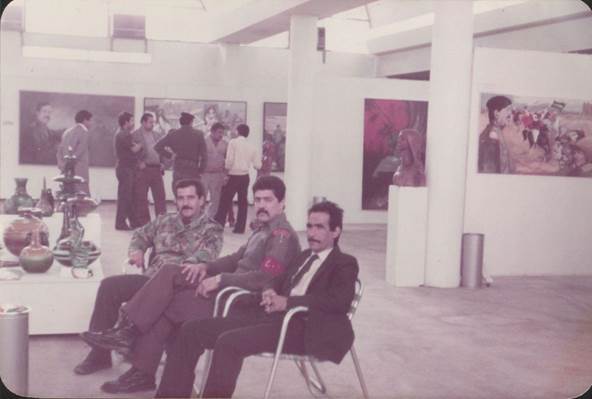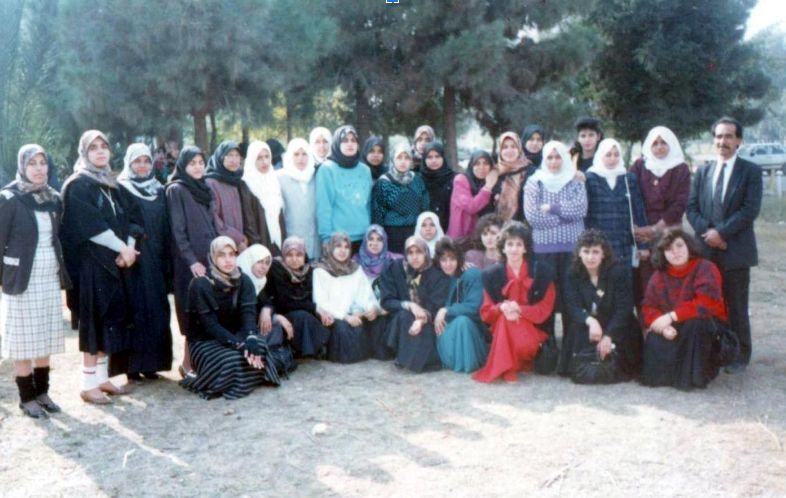An Iraqi Artist’s Legacy
A different copy of Iraqi Contemporary Art sits on the bookshelf in the empty house in Iraq of retired art professor, Dr. Mohammed Karim. This copy, the Arabic edition, was gifted to him when he was a master’s student back in 1980. It was published just as he completed his bachelor’s degree from the Fine Arts Institute of Baghdad.
Dr. Karim’s academic training continued with a master’s degree from Baghdad University. Here he stands in his graduation robes holding his diploma, which was issued in both Arabic and English, speaking to the international mobility of Iraqi degrees.
Dr. Karim’s academic training permitted him to work with a number of important artists. Looking through our University of Michigan Library copy of the English edition of Iraqi Contemporary Art, he points out these former teachers — approximately 20 renowned individuals who passed on their craft to Dr. Karim. In an ideal, safer Iraq, Dr. Karim might have been featured in the later editions of this collection as a successor to Iraq’s growing art movement. Unfortunately, like the dusted copy in his home, such possibilities are the old wishes of a disrupted life in the arts.
Born in Basra in 1956, Dr. Karim has been a department head, artist union leader, and eventual refugee and U.S. resident. His photos and personal life provide a story of the ups and downs of higher education in Iraq, beginning in the early years of the Ba’athi regime and continuing until 1996 when he fled US-led sanctions to relocate his family in Libya. He has shared with us mementos from his years at the Institute of Fine Arts in Baghdad from 1975-1986.
As a student, Karim was fortunate to train with many of Iraq’s great artists. In this image, Karim and his undergraduate cohort take a field trip with their professor, the great Iraqi artist Faiq Hassan (1914-1992), often referred to as the father of Iraqi modern art.
Dr. Karim made significant contributions as a teacher himself. Here he stands together with primary school teachers following a workshop that he taught on art education. It is an example of the integration of higher education and primary education which provided a pathway for Iraqi students to consistently receive high quality schooling, a product of the socialized system.

Across Ethnic Lines

Witness to Political Corruption



